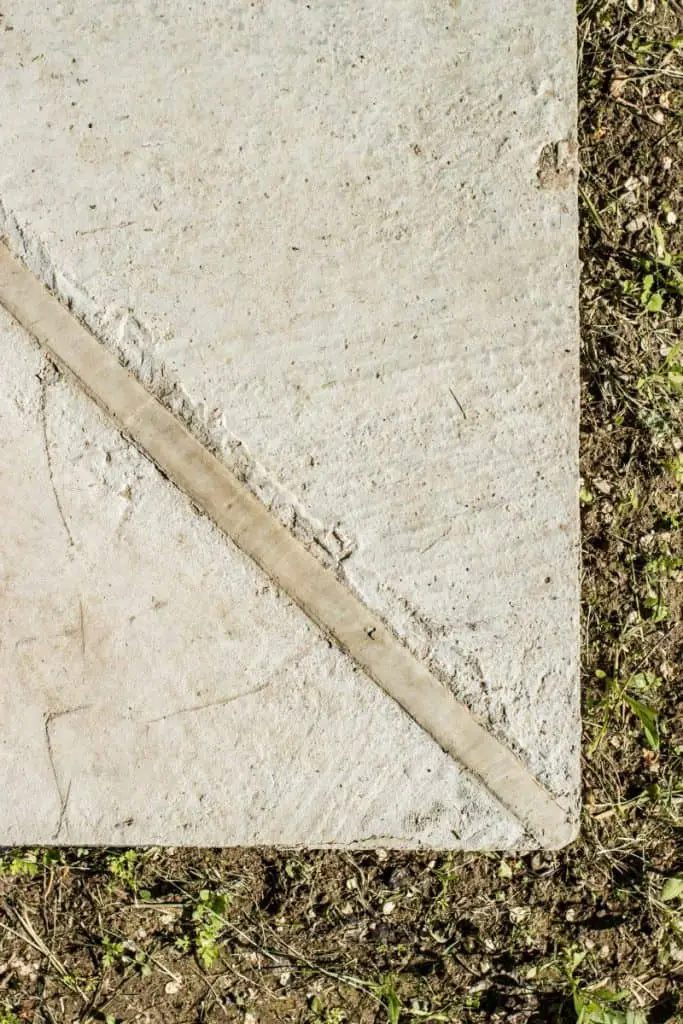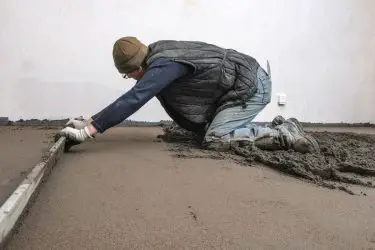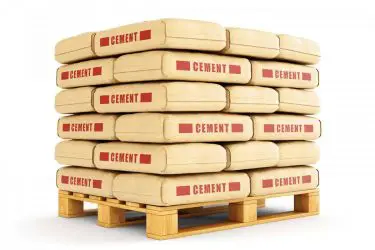Concrete is one of the most commonly used building material for both commercial and private projects, but it isn’t always the simplest. One of the biggest issues when working with concrete is buckling, and without a team of professionals, it is hard to know how to avoid it. Thankfully, through trial and error, we know why buckling happens and how to prevent it.
Concrete buckling can be caused by a difference in temperature throughout a concrete structure or by a rapid temperature change. Heat will expand concrete while an uneven temperature will create tension, but both warm temperature and variances in temperature can result in buckling.

Table of Contents
Why Does Concrete Buckle?
Concrete buckles due to the temperature both in and around its structure. Concrete can be heated by water, sunlight, or surrounding objects.
Hydration can be caused by things such as sprinklers on a sidewalk, washing a building, or weather patterns like rain or snow. Water gets into the pores of the concrete and stays insulated anytime between a few hours to several days. This insulated hydration can heat up and expand the concrete, pushing the limits of the tensile and damaging the material.
Sunlight also heats concrete, but it is usually not an issue as long as the sunlight falls evenly on a structure throughout the day rather than concentrating on one section.
Surrounding objects both above and below the ground affect the temperature of concrete. Underground, things like water pipes, electrical wiring, and the temperature of the earth itself heat concrete, while aboveground, things like vehicles, heating systems, and other buildings can heat concrete.
When concrete is heated, it expands and pushes against itself or surrounding objects, creating cracks and buckles along edges, joints, and weak spots. Similarly, when a concrete structure heats and cools unevenly, the tension creates buckles in weak spots because variation in size across the structure is commonly ignored when calculating the tensile.
Buckling is more common within large structures than small structures because the density of the material allows for more heat to be stored and makes it more difficult to cool the middle or dry out.
Preventing Buckling Before Construction
With pre-planning and smart engineering, you can prevent buckling using expansion joints, calculating a reasonable tensile strength for your structure, and minding weather patterns.

If you look between the slabs of a sidewalk, around a pool, or between a slab of concrete and a building, you may notice that a softer material is placed where there would usually be an open space.
This material is called an expansion joint, which is a buffer made out of a pliable material like cork or plastic that allows for the concrete to expand without putting direct pressure on other slabs or nearby objects. This helps the concrete to safely move around and adjust to both internal and external conditions without cracking or buckling.
Tensile is a vital term to know when working with concrete, as it refers to the ability of a structure to resist elongation and compression- in other words, tensile strength says how much movement your structure can handle before buckling.
To calculate the tensile strength, you can perform tests that measure your structures’ limits on movement, saturation, and compression, to name a few. These tests can be found on the American Concrete Institute’s website. Source
A seemingly unimportant yet crucial factor to consider when working with concrete is the weather. Weather patterns must be thought about when deciding the position of your structure and when to build because those conditions determine how wet, dry, hot, or cold it will be.
If it can be helped, it is best to place your structure in a place that does not get direct sunlight, as direct sunlight will prematurely evaporate the water from your concrete while it is curing, therefore weakening the structure. The curing process takes 25-30 days, meaning concrete placed in direct sunlight can become extremely damaged.
If you have no other choice than to have your structure under the sun, you may prevent buckling by watering it and covering it with tarps or nylon sheets when you are able.
Your plans should be especially thought out when you are building a structure that will have some sections exposed to temperature changes while others will remain constant, or when you are building a structure with an external temperature contrast to the internal temperature (such as a heated or cooled garage). These contrasts in temperature can damage the structure after curing, so thinking carefully about tensile, expansion joints, and the weather is extremely important.
Preventing Buckling On A Pre-existing Structure
Buckling can happen when we least expect it, so if your structure is already built and cured, it is a good idea to take precautions to keep it sturdy. Below are some ways in which you can help your structure keep its integrity for as long as possible:
- Reducing the difference between the internal temperature and the external temperature i.e. keeping your heated garage cooler in the winter so the internal and external temperatures are not extremely different.
- Keeping steel framework in reinforced concrete structures warm during the winter using air heating.
- Using thermally insulating materials as siding for outdoor structures to streamline the temperature throughout the structure.
- Placing thermally insulating materials around your concrete structure to keep water within the foundation from freezing too quickly during the winter.
- Placing buttresses made of wood, steel, or concrete on the outside of your structure in order to lighten the pressure that higher slabs may place on those below them.
How to Fix Concrete Buckles
Even when preventative measures are taken, concrete can still buckle. However, this is not the end of the world, because there are ways you can repair these damages.
The simplest way to repair a concrete buckle is to remove pieces or sections that are out of place, then find an adhesive caulk and fill in any crevices or holes. This will work to repair the structure cosmetically, but it will not be as strong as it was before. If the concrete that buckled is part of a driveway, patio, or sidewalk, you can cover it with pavers or bricks.

If all else fails and you feel your buckle is irredeemable, the best thing to do is to remove the damaged section and pour a new slab using both the pre-construction and preexisting tips and tricks from this article to prevent buckling in the future.



